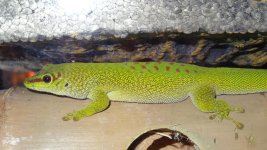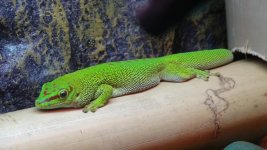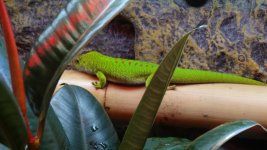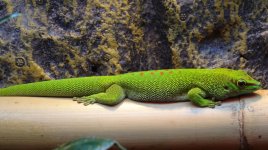lfreday42x
New member
Hello,
I was wondering if any of you ever had the happen to your gecko. He found a cricket that I had dropped on the bottom by mistake. When he went to grab it, missed and ended up getting a piece of charcoal (part of the substrate mix) that was about the size of his mouth. He seems a bit sluggish and reluctant to eat anything. He has taken a cricket (that I hand fed this morning) but still seems not himself. Can geckos break charcoal down? The piece was so big i am worried that he may not be able to pass it through. Thanks if anyone has any information.
I was wondering if any of you ever had the happen to your gecko. He found a cricket that I had dropped on the bottom by mistake. When he went to grab it, missed and ended up getting a piece of charcoal (part of the substrate mix) that was about the size of his mouth. He seems a bit sluggish and reluctant to eat anything. He has taken a cricket (that I hand fed this morning) but still seems not himself. Can geckos break charcoal down? The piece was so big i am worried that he may not be able to pass it through. Thanks if anyone has any information.







